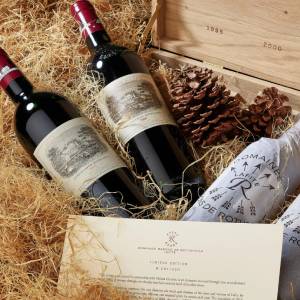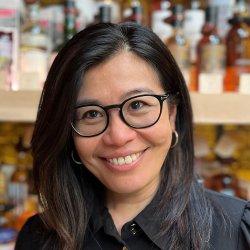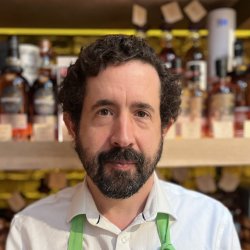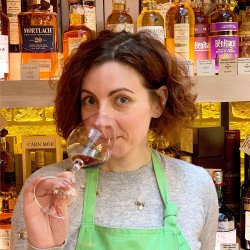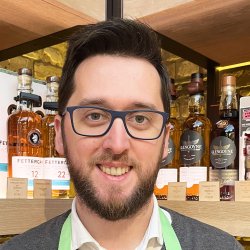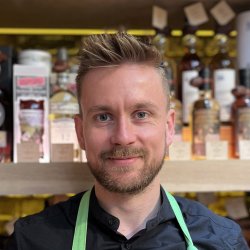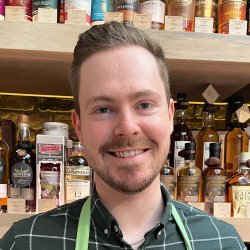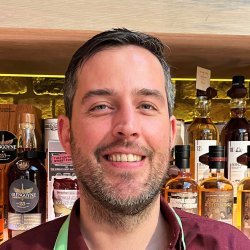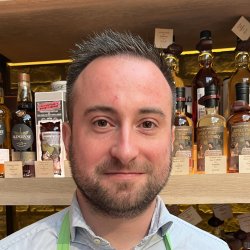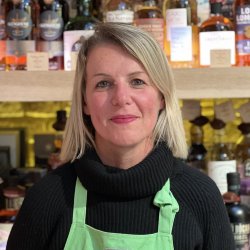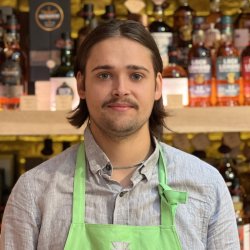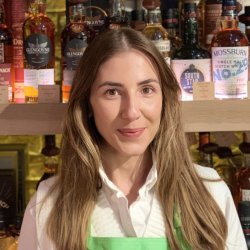Hedonism Meets... Johann Henschke

We sit down with one of the leading names on the Australian winemaking scene, Johann Henschke. Sixth generation of the Henschke family, winemaker and viticulturist, Johann shares the fascinating story behind the family estate and its highly sought-after wines. So pour yourself a glass and read on to discover more.
Sixth generation at Henschke, did you always want to work in wine? Can you tell us a bit about your training and path to becoming a winemaker?
Let’s be honest, there’s an inevitability that the eldest child will have some interest in the family business. While my parents never pushed me down the winemaking path, if I wanted to spend time with them, it was by ‘helping’ (read staying out of trouble): my father with pumping over the red fermentations; my mother with carrying sample bags through the vineyard rows; and opening bottles of wines for their customers on Saturday mornings. I think it all rubbed off on me. I enjoyed science at school, and chose to study winemaking at university, which of course has a strong base of science. Having had an early introduction to restaurants, food and wine, I found a group of people in the winemaking world who shared my fascination for wine and its experiences. The realisation of how unique it is to be able to continue a family tradition really began to dawn on me too. Later I had the opportunity to travel around the world and make wine with some great winemakers, in New Zealand, USA and Italy, before studying a Master in Viticulture. And in between helping out in the vineyards, winery and cellar door back at Henschke. Then, having met my Spanish-born wife Angela, we moved to the area in 2013 and I started working with my parents in the vineyards and winery.
Where are the Henschke vineyards located? How do these different terroirs impact on the resulting wine styles?
The vineyards are found in an elevated area of an ancient mountain range, the Mount Lofty Ranges, in South Australia, just inland to the north and east of the city of Adelaide. The three regions that we harvest grapes from are the Barossa Valley, Eden Valley and Adelaide Hills. It has been interesting to learn that this area sits within the historic Peramangk country of Australia’s First Nations. Being continental and all at altitude, the vineyards experience a diurnal shift which translates as warm days yet cool nights. The effect on the grapes is that they ripen with more fruit intensity and tannin maturity while still retaining natural acidity and aromatic complexities of florals and spice. Within the Eden Valley, a region naturally delineated with a north-south alignment (just as the Rhone and Burgundy are too), the old-vine, single-vineyard shiraz wines show clear differences in palate shape and aromatic expression. This is best summarised by the difference in terroir between each vineyard site, as we harvest beginning in the north and finishing in the south. I should mention too, that this is not a recent revelation; my grandfather (4th generation winemaker Cyril Henschke) was already noticing the influence of terroir when he began bottling the first vintages of Mount Edelstone and Hill of Grace in the 1950s.
“Curiously, those first varieties that were made into wine by our ancestors, continue to be the premier varieties for the Eden Valley.”
Can you tell our readers a bit about the story behind Henschke and how it all first started?
For most people, it is a surprise to hear that an Australian family has been making wine for over 150 years. The story begins in 1841, when, suffering religious persecution, my ancestors abandoned their homeland of German-speaking Silesia (modern-day Western Poland) and fled to Australia with nothing but their families, their skills and their faith. 1st-generation winemaker Johann Christian Henschke was noted on arrival into Adelaide as being a Wheelwright and Stonemason. We assume that one of his many other non-documented skills was to make wine, something he started to do after building a stone homestead and small stone cellar into the hillside, and of course planting vines, at his newly-purchased tiny farm property in Keyneton (Eden Valley) in 1868. The first wines were made in an open-top stone fermenter, also built into the hillside, which looked similar to the ‘lagares’ of the Iberian Peninsula. Those first wines were sold as ‘Hock’ (riesling) and ‘Claret’ (a red blend of primarily shiraz), as well as being consumed as altar wine in the nearby Lutheran church.
Each generation of Henschke winemakers fastidiously tended to the vines and produced quality wines for the community. It wasn’t until 4th generation winemaker Cyril took over in the 1950s, did the wines start to be bottled and labelled; previously they had been sold in pottery jars (known in the local German language as a ‘krug’). Cyril began bottling rieslings and, particularly noteworthy for the era, single-vineyard shiraz wines from (very) old vines. Two wines really define Cyril’s legacy, the aforementioned duo, Mount Edelstone and Hill of Grace. Both are shiraz wines and both from single-vineyards only separated by 3 km (2 mi), yet with such distinction in style.
Then, after Cyril’s death in 1979, my father, 5th generation winemaker Stephen took on the family tradition, joined by my mother, his viticulturist wife Prue, and together have refined the vineyards and the wines to a level that they sit comfortably yet distinctly, within the highest echelons of fine wines from around the world. Curiously, those first varieties that were made into wine by our ancestors, continue to be the premier varieties for the Eden Valley.

Do Henschke use organic or biodynamic practices - whether in the vineyard or in the winery?
Yes, in the vineyard, and it has been a progression of practices over the last 30 years. Prue took over the management of the Hill of Grace vineyard from Cyril’s brother Louis after his 40-year tenure and death in 1990. Uncle Louis was a firm believer in the ‘traditional way’ of farming, so he didn’t utilise synthetic chemicals (i.e. he used ‘organic’ practices). At the same time Prue was managing other vineyard sites, where synthetic herbicides and fertilisers were historically used. Australia already has some of the most ancient soils in the world, and due to this, organic matter is very low. Comparing to Hill of Grace, she began to notice that some vineyards were suffering from a lack of life in the soil, and the increasingly popular ‘organic movement’ offered a way of at least regenerate some life and allowing for natural nutrient cycling to occur, due to the exclusion of broad-spectrum synthetic chemicals typically used. She stopped ploughing the soils, a major cause of erosion and loss of fertility from the soil, and allowed Australian native grass swards to occupy the vineyard mid-rows, choosing to mow them instead. She began looking for options for adding mulch underneath the vines, which would contribute a minimal amount of extra organic matter, and maintain leaf health during increasingly-common very dry summers.
Then, in the early 2000s, she discovered biodynamic practices and was struck by how effective the ‘home-made’ biodynamic composts were at improving soil fertility. This has been a significant change in practice to all of the vineyards, and has meant that the old vines are growing in healthier soil. It doesn’t stop there, however; Prue originally trained as a botanist, and has used her experience to identify and grow suitable Australian native plants to attract predator insects into the vineyards which prey upon common vineyard pests such as aphids and vine moth grubs. This multi-faceted approach is difficult to summarise with one word; it is simply finding ways to care for the vines in the most respectful ways, in practices adapted to these unique Australian conditions.
Earlier this year saw the global release of Henschke’s superb 2017 Single Vineyard wines. Can you tell us a little about the 2017 vintage and the impact it has had on the wine styles produced?
We summarise the 2017 vintage as ‘graced by vitality’. These are an exciting set of single-vineyard shiraz wines. They are perfumed, complex and have energy, and we expect them to have excellent ageing potential. This was due to a later-than-normal ripening period (when compared to most vintages) which came as a result of a wetter-than-average summer and Autumn, cloudy skies and overall mild temperatures. The Eden Valley shiraz parcels were picked in the month of April, with moderately low yields and made wines with exceptional balance, concentration and fine, layered, silk-like tannins. It is a vintage where we see a clear distinction in expression between the three single-vineyard sites.

"The story of Hill of Grace perfectly encapsulates the Henschke family’s ‘raison d’être’ in Australia.”
We sell an array of vintages and formats of Henschke Hill of Grace here at Hedonism – can you tell us a bit about the story behind this wine?
The story of Hill of Grace perfectly encapsulates the Henschke family’s ‘raison d’être’ in Australia. Our family left its European homeland to find religious freedom, and this wine has brought us full circle back to the place that we left, as well as many others, to share our story and unique Australian wines. We begin in the Northern Eden Valley, at a single-vineyard of 8 hectares, occupied mostly by pre-phylloxera, dry-grown, old vines; the earliest shiraz vines planted in 1860 by my maternal ancestor Nicholas Stanitzki. The vineyard lies at the crossing of two dirt roads, not on a hill as the name suggests, but in a fertile valley that was once a riverbed. At the time of planting, the vineyard formed part of a newly-settled village called Parrotts Hill.
Across the road from the vineyard, on land donated by the Henschke family, the community erected a modest yet proud Lutheran church, which they christened ‘Gnadenberg’ when the first service took place in 1860. It wasn’t until the vines were already 100 years old, when Cyril had the vision to make his second single-vineyard shiraz (the first being Mount Edelstone in the 1952 vintage). He fermented the grapes separately, alongside the Mount Edelstone grapes, in open-top, concrete fermenters, that he and his father Alfred had built together some years earlier. He directly translated the church’s name from German to English and the moniker ‘Hill of Grace’ was used for the very first time as a recognition of the unique terroir. It adorned the 1958 vintage bottling, and those first bottles, when uncorked, released the signature aromatic stamp of the vineyard into the air; concentrated aromas of sweet cooking spices, violets, blackberries and blackcurrants. This was a pivotal moment in the Henschke family’s history, as Cyril’s conviction set us on a course to focus our efforts on making expressive, old-vine, single-vineyard wines. We have now been making the Hill of Grace wine for over 60 consecutive vintages, and it has proven its inherent quality and longevity, and set its place firmly as one of Australia’s greatest wines.
“…the resultant wine has incredible concentration, yet shows the finesse that the Eden Valley is typified by.”
For people tasting Henschke for the first time, what wine/vintage would you recommend, and why?
I would recommend to taste the 2016 Mount Edelstone shiraz. The Mount Edelstone was my grandfather’s first single-vineyard creation in the 1952 vintage, which he made in an era where blended wines were considered in far higher regard. He was a talented winemaker and recognised the quality of the vineyard, which at the time was already 40 years old (planting date: 1912). By the end of the 1950s, this never-before-heard-of winemaker from the Barossa’s Eden Valley, was seeing his Mount Edelstone bought by the top restaurants in Sydney, Melbourne and Brisbane, and became an important wine in avid collectors’ cellars. It is now the longest consecutively-made single-vineyard wine in Australia.
Over 60 vintages later, in the 2016 vintage, the grapes were harvested from centenarian vines (over 100 years old), so the resultant wine has incredible concentration, yet shows the finesse that the Eden Valley is typified by. The aromatics are alike Hill of Grace, yet different; instead, the bouquet is perfumed with crushed sage leaves and black pepper, violets, blackberries and mulberries. But it is the layered, silky, natural grape skin tannin on the palate which really separates it from the others; this can only be captured in the wines made from these ancient, pre-phylloxera vineyards.
“The thing that we know with certainty is that the wines will only improve further with ideal cellaring…”
How well do your wines age? How long would you recommend cellaring the Hill of Grace for example?
With my grandfather’s wines dating back to the 1950s in bottle, we have actual experience of how well the wines age. The 1986 Hill of Grace and Mount Edelstone are drinking beautifully now, as are the vintages of the early 1990s. We expect that these wines, now sealed under Stelvin or Vinolok since 2005, will be drinking at their optimum in 30-40 years’ time. Having said that, many commentators have expressed their surprise at how approachable the new vintages are on release; the thing that we know with certainty is that the wines will only improve further with ideal cellaring.
At Henschke you produce stellar wines from a wonderful array of red and white varieties including Grenache, Mataro, Shiraz, Sémillon, Riesling, Pinot Noir and Nebbiolo. What is your favourite variety to work with and why?
For a long time it has been Adelaide Hills pinot noir; the differences in aromatics and palate shape from clone to clone, and how the variety responds to different aspects, has always fascinated me. Then the creativity in the winemaking is boundless; the challenge is to then repeat the small successes in the following vintage, which means spending a lot time in the vineyard attempting to bring the best out of the vines. However, now with the Eden Valley Nebbiolo vines coming of age (almost 20 years old now), the quality is becoming more consistent, and we are starting to push the boundaries with how we can get the best out of the grapes. I have to say that it is becoming my favourite to make, especially because we are still at the beginning of this variety’s journey in Australia.
Henschke uses a range of different bottle closures – screwcap/Stelvin/Vinolok- glass closures – why is this? Does this herald the end of traditional cork?
My father Stephen became very frustrated with how often corks were ruining some of his proudest winemaking achievements. Although a firm believer in maintaining the traditions of wine, there had to be another way! And there was; in the late 1990s he discovered the Stelvin closure (a French-made brandname screwcap), and began trialling it on his top white wines, in particular the Julius riesling. It exceeded his expectations, and he began to trial it on his red wines in the early 2000s. Within years, Australian wine lovers were purchasing wine broadly under this closure preferentially over cork closures, as quality was all but guaranteed. But it didn’t have the same level of acceptance in other key markets, and that is where the Vinolok came in. My father discovered the Vinolok (glass) closure in 2004 and began trialling it on his top red wines. It proved to be as good a closure as the Stelvin, but had the added advantage of being more aesthetically-pleasing; a glass closure in a glass bottle. It provokes images of a diamond mounted on the mouth of the bottle. We continue to bottle the wines under both closures, offering them depending on the destination of the wine. And yes, the last bottles of Henschke under the traditional cork can be found in the 2004 vintage.
Being part of an historic winemaking family must come with its pressures – what do you seek to keep the same and what would you like to change in your role as custodian of Henschke?
I wouldn’t be human if I didn’t feel pressure! It is an incredible family legacy to continue, and there will be challenges around every corner. However it is so clear to me what makes Henschke unique; that is, put simply, making the best possible wines from vineyard sites we know are very special. Being a scientist, I believe that science and technology will help us to achieve this, alongside experience and tradition. And we will continue to experiment; the new plantings of varieties yet explored in our regions, could give rise to special vineyards, so that in 50 or 100 years’ time my grandchildren will too be making unique, old-vine, single-vineyard wines from the Australian landscape.
Photos by Dragan Radocaj

